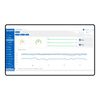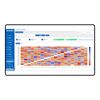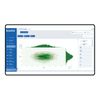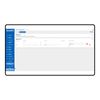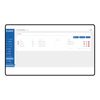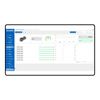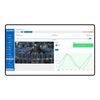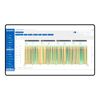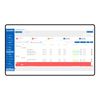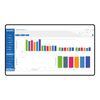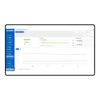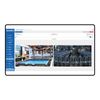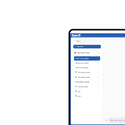Product Overview
Gefran, in cooperation with 40Factory, has launched MAX, the new Industrial IoT solution dedicated to machine builders and manufacturing companies.
MAX is a solution based on a set of Docker microservices that cover all aspects of the data chain. From data acquisition from PLCs (data layer) to the visualization of analytics results on the web (web layer).
At the “data layer” level, the main services include data acquisition from the PLC, data aggregation and storage, transmission to the cloud, anomaly detection, and data writing to the PLC.
At the “web layer” level, the main services include user authentication, data management, rule-based alert creation, image analysis, and data transmission to the front end (i.e., the display interface).
These microservices form the basis of all MAX core modules as well as additional features.
Furthermore, starting from the data manager implemented in the web layer, it is possible to expose APIs (application programming interfaces) to integrate data from MAX into third-party applications.
MAX system architectures
MAX system architectures are primarily distinguished by how dashboard creation and display are managed.
When dashboard creation and display are managed entirely locally, this is referred to as edge architecture
– the simplest architecture involves a single edge device, which implements all services locally, without connecting to the cloud; display takes place via the machine panel or local PC
– An evolution of the previous architecture involves a connection to the cloud, allowing the installation of dockers on the edge device through the Portainer service managed by the MAX Control Center
– A further generalization of the edge architecture involves the installation of multiple edge devices (for example, one per machine; authentication, historization, back-end, and front-end functions can be centralized on a single device at the plant level.
Edge architectures are particularly suitable for mission-critical applications and high volumes of data exchange. On the other hand, they require more hardware at the local level and are a little more complex to configure.
We talk about hybrid architecture with a cloud component when the creation and visualization of dashboards takes place at the web level. Data is collected from one or more edge devices and transferred to the cloud.
There are always two cloud layers: one owned by the customer, where the data is stored, and one managed by 40Factory on behalf of Gefran, where the MAX modules are implemented. In this way, the data always remains under the customer’s control, while the management of MAX applications is centralized, ensuring maximum availability and continuous updating. Since both layers are implemented on Microsoft Azure, cloud-to-cloud communication is fast and easy to configure.
The cloud access mode is particularly suitable for geographically distributed machine parks and allows for a reduction in the hardware infrastructure implemented in the plant.
Integration of MAX with G-Mation
The G-Mation platform is particularly well suited to supporting the implementation of MAX in both full edge and hybrid modes.
Firstly, the docker architecture allows MAX dockerized apps to be easily implemented and updated, even on machines already in the field.
In addition, G-Mation’s webserver architecture, thanks to NGINX technology, allows you to manage additional backends, in addition to the one integrated in the PLC for machine control and configuration.
In particular, the backend contained in MAX dockers allows you to call up the application and its modules directly on the G-Mation operator panel, based on web technology.
It is as simple as opening a new window in your personal computer’s browser.
Another of the main advantages of integrating MAX with G-Mation is direct access to PLC data: a “data collector” docker has been set up that directly maps the PLC variables to the MAX internal database, increasing data access speed and eliminating the need to program communication on protocols external to the PLC.
As for hybrid implementation with cloud access, the availability of a dockerized VPN directly on the G-Mation PLC allows you to reach the MAX cloud platform securely, without having to go through additional gateways.
For full edge implementation, the 8 GB of memory and multicore CPU architecture allow you to implement many MAX features locally without slowing down machine control in any way.
Using a single edge device to manage multiple machines
In some production line configurations, it may be useful to configure a single edge device to manage multiple machines.
This edge device can be implemented with a PLC on board one of the machines, or as an independent industrial PC.
In this configuration, communication flows must be set up between all machines and the edge device.
In particular, MAX edge devices interface with PLCs using a suite of standard automation protocols. These protocols, including Modbus, OPC Unified Architecture (OPC UA), and EtherNet/IP, are designed to ensure seamless data exchange between different hardware and software platforms.
The basis of communication between MAX edge devices and PLCs is predominantly one-way. This approach focuses primarily on reading data from PLCs to MAX Edge devices. The importance of read-only communication lies in its ability to minimize the risk of unintentional interruptions to PLC operations.
There are also application scenarios that require MAX edge devices to engage in bidirectional communication with PLCs. A critical application of bidirectional communication is production order management. This type of bidirectional communication is only performed if the job executor module is configured in the MAX configuration.

